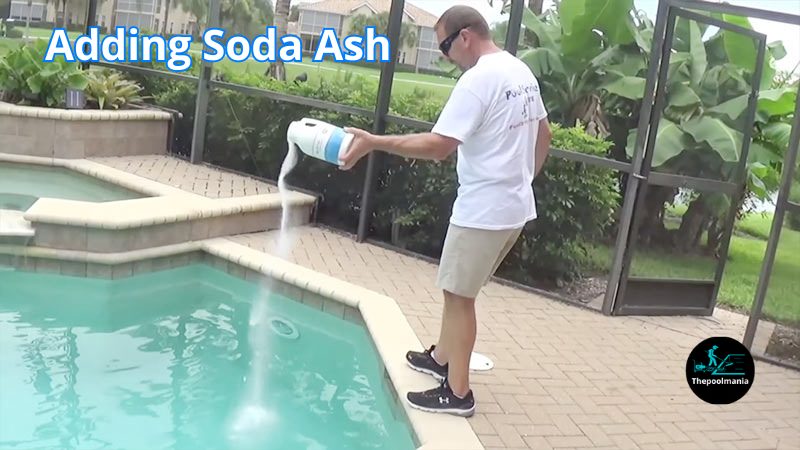Having a pool is a fantastic way to relax and enjoy the summer, but maintaining the proper pH balance is crucial for a safe and enjoyable swimming experience.
As a pool owner myself, I understand the frustration of dealing with low pH levels, which can lead to skin and eye irritation.
Therefore, I’m sharing effective techniques and tips on how to raise the pH in your pool, ensuring a comfortable and refreshing environment for all swimmers. Let’s dive in!
What To Use To Increase pH In Pool?
- Sodium Bicarbonate, commonly known as Baking soda, has a pH of 8 and is naturally alkaline. It is a major active element in commercial pool alkalinity boosters, so that we can use it directly.
- Sodium Carbonate, also called Soda Ash, is another effective chemical suggested to raise the pH of your pool.
Comparison of Baking Soda Vs. Soda Ash
The industry standard suggests that baking soda is the go-to choice for boosting total alkalinity, while Soda Ash works wonders to increase pH levels. But here’s a catch: when the alkalinity is already sky-high, adding baking soda can unexpectedly tip the pH scale, throwing your water chemistry off balance.
Best Way To Raise pH In Pool
1. Test the Ph Level
Use a pool water testing kit to determine the current pH level of your pool. The ideal pH range for a pool is typically between 7.4 and 7.6.
2. Add Soda Ash (Sodium Carbonate)
If the pH level is below the desired range, add soda ash. Dissolve the soda ash in a bucket of water and distribute it evenly across the pool while the circulation system runs.

Follow the manufacturer’s instructions for the appropriate dosage based on your pool size and current pH level.
3. Wait And Retest
Allow the pool water to circulate for several hours to ensure thorough mixing. Afterward, retest the pH level to ensure it has reached the desired range.
4. Repeat (If Necessary)
If the pH level is still below the target range, you can repeat the process by adding more soda ash. However, avoid overshooting the pH level, as excessively high pH can lead to other issues.
5. Monitor Other Levels
While adjusting the pH, keep an eye on other pool water parameters, such as total alkalinity and calcium hardness. These levels can affect pH stability, so ensure they are also within the recommended ranges.
6. Regular Maintenance
Regularly test the water and adjust as needed to maintain the pH level within the desired range. Factors like rainfall, pool usage, and the addition of chemicals can influence pH levels over time.
Wrap Up:
In short, learning how to raise pH in pool can help pool owners maintain pool health, safety, and cleanliness. By following the step-by-step guide provided can effectively increase the pH in your pool, as it is all about the elements and how you use them.
Don’t forget to visit and follow thepoolmania.com to learn the most effective techniques and guidelines on pool maintenance.
